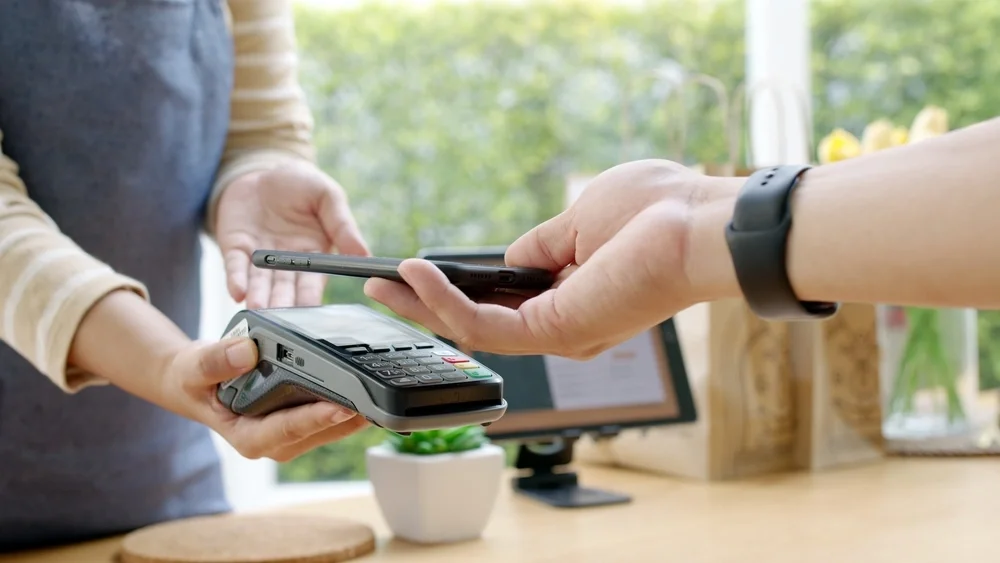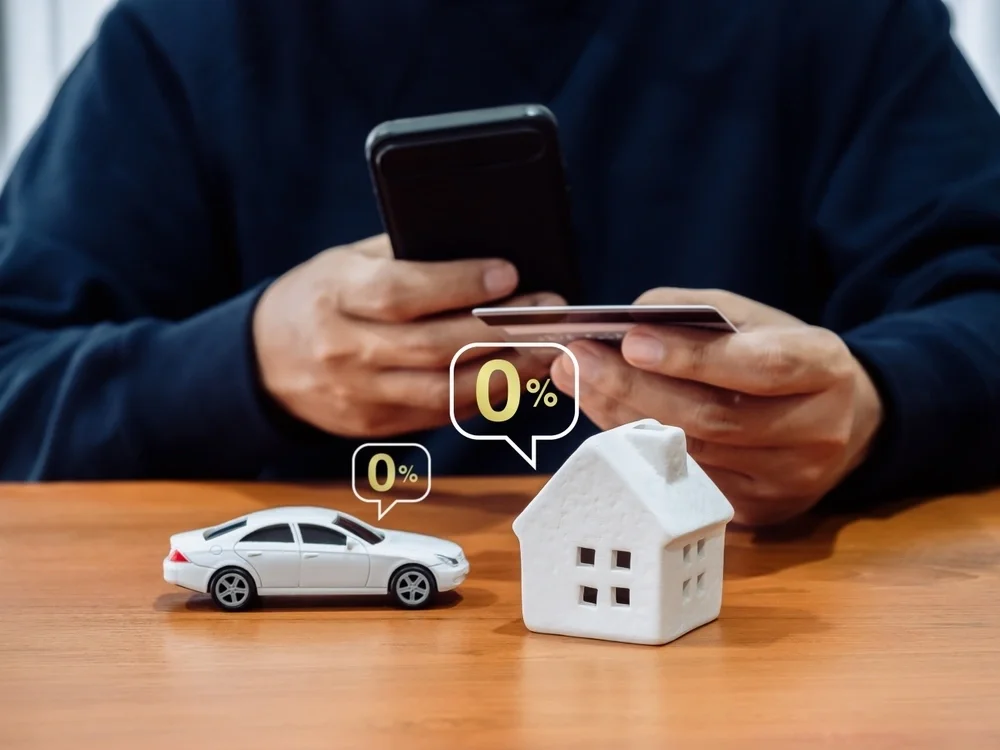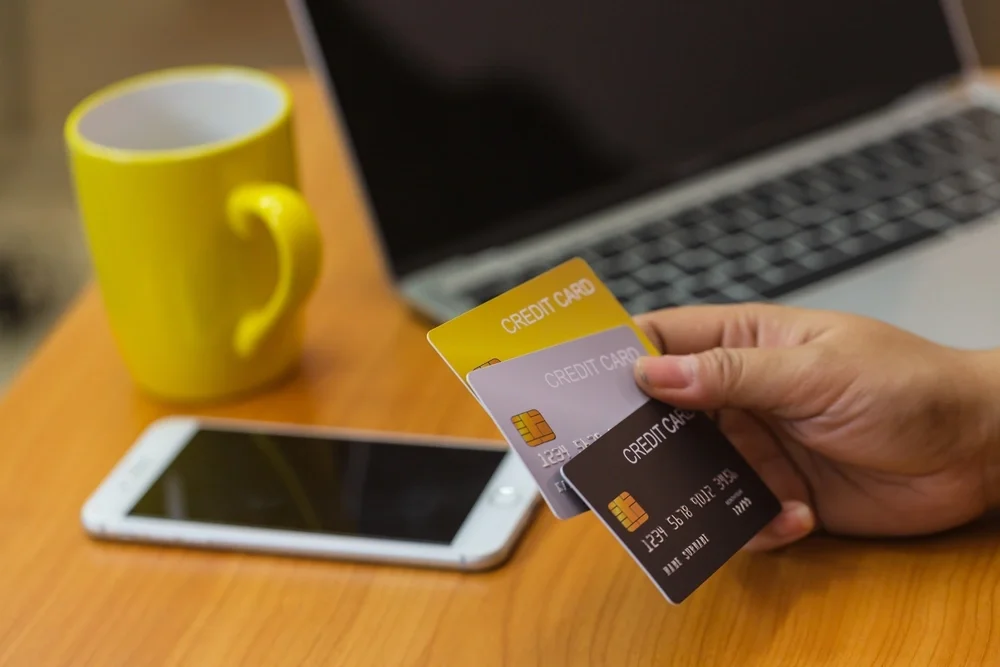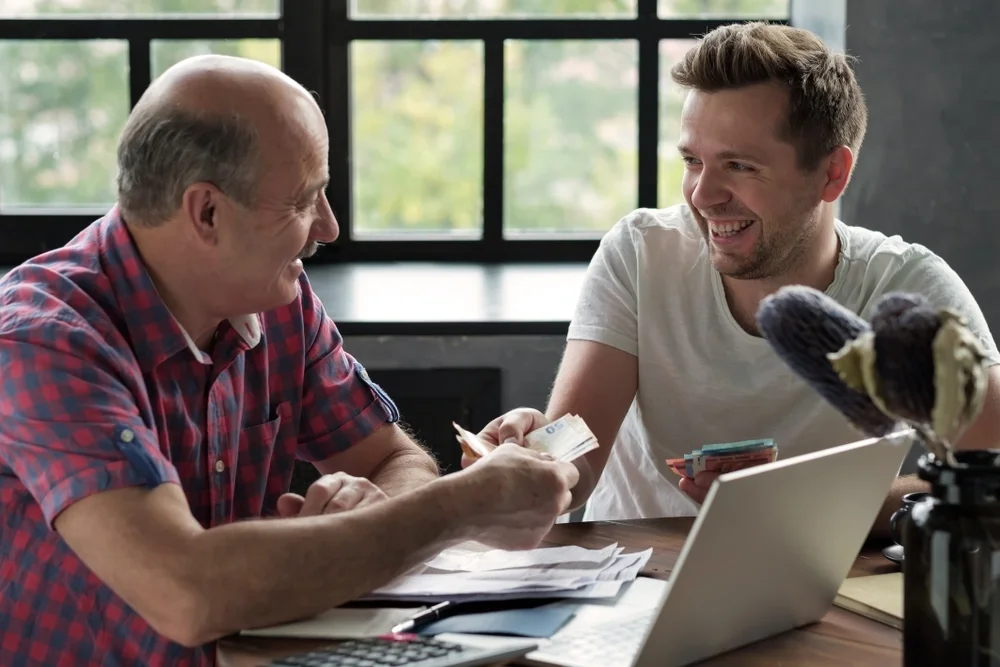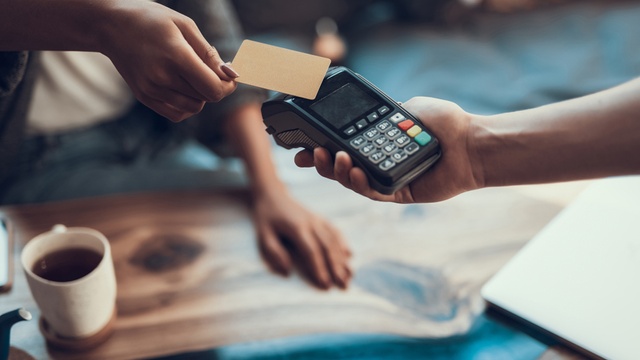Contactless payments have become the go-to way to pay in the UK, making everyday transactions quicker and easier. In fact, they now account for 38% of all payments, with people of all ages tapping to pay – even 80% of those aged 85-95!
Whether you're grabbing a coffee, hopping on the bus, or paying for your weekly shop, contactless payments save time at the till. But how do they work, and how can you keep your payments secure? Let’s dive in.
What is contactless payment?
Contactless payment allows you to pay for items by simply holding your contactless card or device over a payment terminal. Using near-field communication (NFC) wireless technology, no physical contact is needed. Most places, including public transport systems, accept contactless payments. You don’t need to use your PIN, making it both convenient and quick.
This is the symbol for contactless payments (which can be found on your card, the payment terminal and on the signs in the shop):

Contactless payments are also known as “tap and go.”
When did contactless payments start?
Contactless payments arrived in the UK in 2007, with Barclaycard launching the first tap-to-pay card. At first, the limit was just £10, but as more people started using it—especially after Transport for London added contactless in 2014—the limit increased. It went up to £45 in 2020 and £100 in 2021.
How do I use contactless?
There are several ways to make contactless payments:
- On your card: Once your card is activated, you can use it wherever contactless payments are accepted. If it's a new card, you'll need to use the PIN for the first transaction to activate contactless. The contactless feature can't be disabled on cards, but you can still swipe your card and enter your PIN if you prefer.
- On your phone: Mobile wallets like Apple Pay and Google Pay link your debit or credit cards to your smartphone. Your card doesn’t need to be contactless for this to work. Your phone must support NFC, which you can check in your settings. You make payments by holding the device over the payment terminal, just like with a card. Unlike cards, mobile wallets use a different security process, often requiring fingerprint, facial recognition, or a passcode for each transaction.
- On your tablet or smartwatch: You can also link cards to NFC-enabled tablets and smartwatches, offering another way to pay without carrying your wallet.
Contactless payments can take a few working days to show up on your statement, so keep an eye on your spending to avoid surprises.
What is the limit for contactless payments?
Wondering how much you can spend with contactless? The UK limit is £100 per transaction. However, for security reasons, some card providers may require you to enter your PIN after multiple transactions in a row.
Some banks allow you to set your own contactless limit between £30-100, and others give you the option to turn off contactless payments altogether. For transactions above the limit, you'll need to enter your PIN.
If you use a contact-enabled device like your phone, there’s no contactless spending limit, but you'll always need to authenticate transactions with a fingerprint, passcode or facial recognition.
How can I get contactless?
Most cards already have the contactless facility. If yours doesn't, contact your bank to request one. Smartphones and devices need to support NFC payments to pay by contactless.
If you prefer not to have a contactless card, speak to your bank - while most now provide contactless by default, some still offer Chip and PIN only cards.
Security tips
Contactless cards are secure and subject to the same fraud prevention measures as Chip and PIN cards. Contactless signals shouldn’t transmit beyond 10cm, but if you're concerned about accidental or fraudulent scanning, you can buy cardholders and wallets that block the signal.
If you lose your card, notify your bank immediately to cancel it. Many banks also allow you to freeze your card via mobile banking apps while you look for it.
For mobile payments:
- Use a strong password, fingerprint, or facial recognition to lock your device.
- Mobile wallets use encryption and tokenisation, meaning your actual card details are never stored or shared with retailers.
- Set up instant notifications with your bank for transactions to track your spending and spot fraud quickly.
Want to learn more about keeping your money safe? Check out our guide on credit card fraud.
Fiona is a personal finance writer with over 7 years’ experience writing for a broad range of industries before joining Ocean in 2021. She uses her wealth of experience to turn the overwhelming aspects of finance into articles that are easy to understand.
![Email icon]()
Become a money maestro!
Sign up for tips on how to improve your credit score, offers and deals to help you save money, exclusive competitions and exciting products!
Find this useful? Share it with others!


